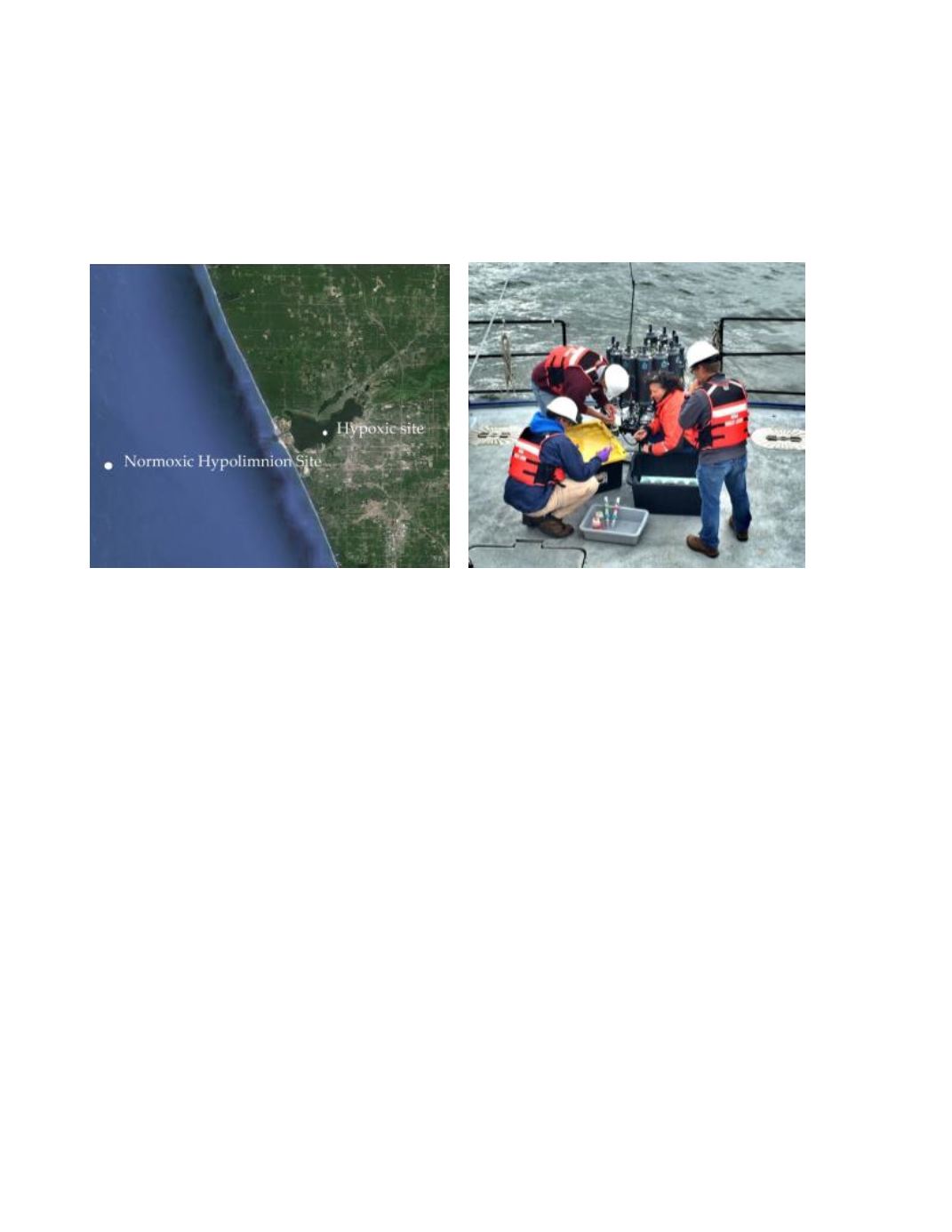

Ref. No. [UMCES] CBL 2016-010
ACT VS16-01
59
Profiling Deployment in the Great Lakes
Great Lakes profiling tests for the JFE AroUSB were performed aboard the R/V Laurentian at
two separate locations in order to experience both normoxic and hypoxic hypolimnion (Photo 7). The
normoxic site was located in Lake Michigan (43.184
°
N, 86.456
°
W) within a 64m deep water column,
while the hypoxic site was in Muskegon Lake at 43.22
°
N, 86.30
°
W with a 24m deep water column.
Photo 7.
Aerial view of Lake Michigan and Muskegon Lake (left) and profile rig used for GL profiling
Two profiling trials were conducted at each location. The first trial involved equilibrating test
instruments at the surface (3m) for ten minutes and then collecting three Niskin bottle samples at one
minute intervals. Following the third sample, the rosette was quickly profiled into the hypolimnion
where samples were collected immediately upon arrival and then each minute for the next 6 minutes
(figure 11 and 13). The second trial was performed in the reverse direction where instruments were
equilibrated at depth, three samples collected, and then profiled into the surface and sampled over the
next 7 minutes. Note for Muskegon Lake cast 1 was discarded due to bottle misfires, so a third cast
was performed to repeat the original pattern (Fig. 11).
Temperature and DO concentration profiles for Muskegon Lake and Lake Michigan are given in
figures 12 and 14, respectively. In Muskegon Lake, the temperature ranged from 21.0
o
C at the surface
to 13.5
o
C in the hypolimnion, with corresponding DO concentrations of 7.8 and 2.8 mg/L,
respectively. In Lake Michigan, the temperature ranged from 21.0
o
C at the surface to 4.1
o
C in the
hypolimnion, with corresponding DO concentrations of 8.6 and 12.6 mg/L, respectively.
Results for the JFE AroUSB for the two Muskegon Lake trials are shown in figure 15. The
instrument exhibited a negative bias in the colder, low DO hypolimnion and a positive bias in the
warm, high DO surface. Sensor equilibration time was slightly greater going from surface to
hypolimnetic conditions (
right side, cast 3
). The range in measurement differences between
instrument and reference was -0.42 to 0.34 mg/L for cast 2 and -0.75 to 0.27 mg/L for cast 3.
Results for the JFE AroUSB for the two Lake Michigan trials are shown in figure 16. The
instrument exhibited a positive bias in both portions of the water column but the magnitude was higher
















